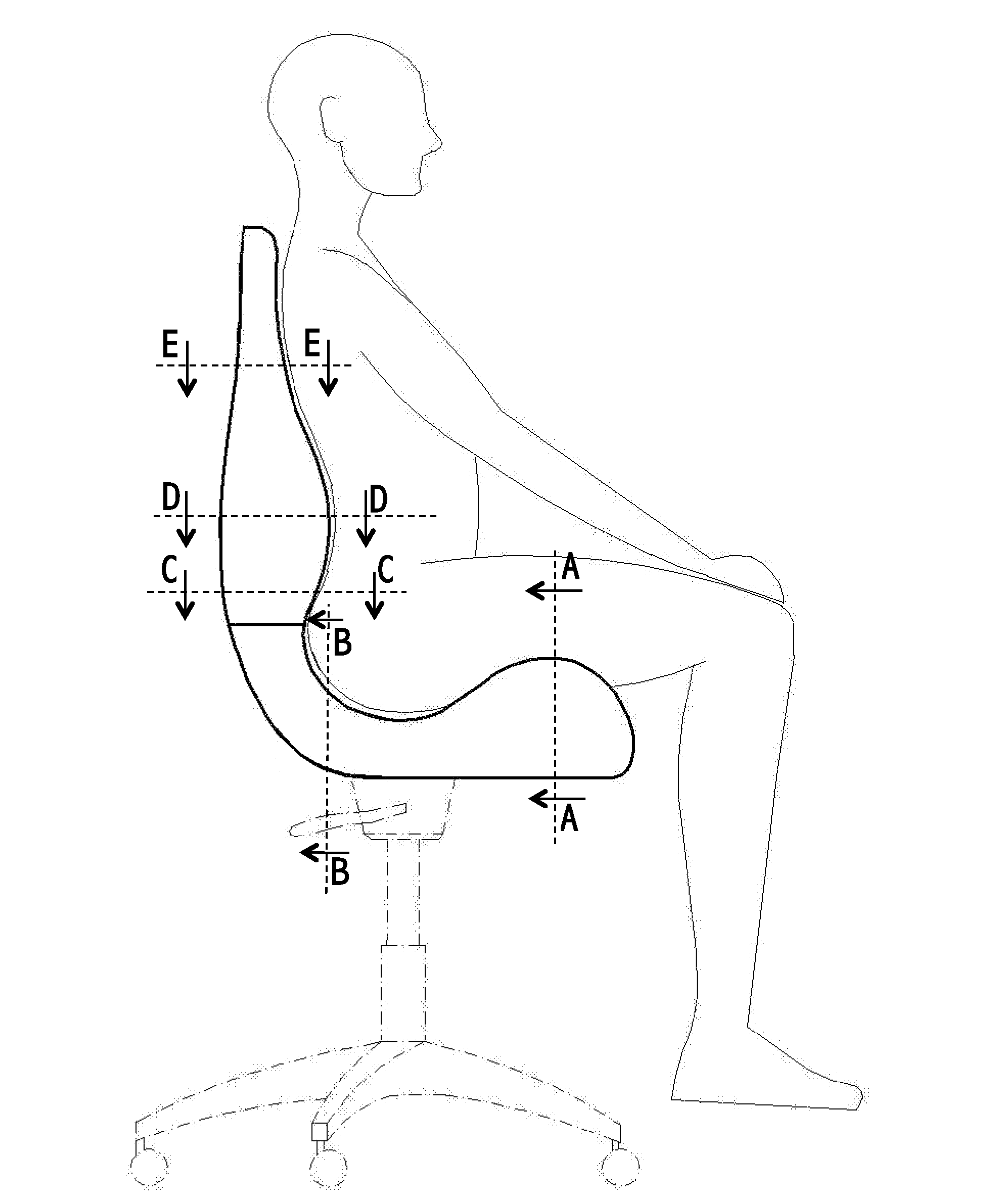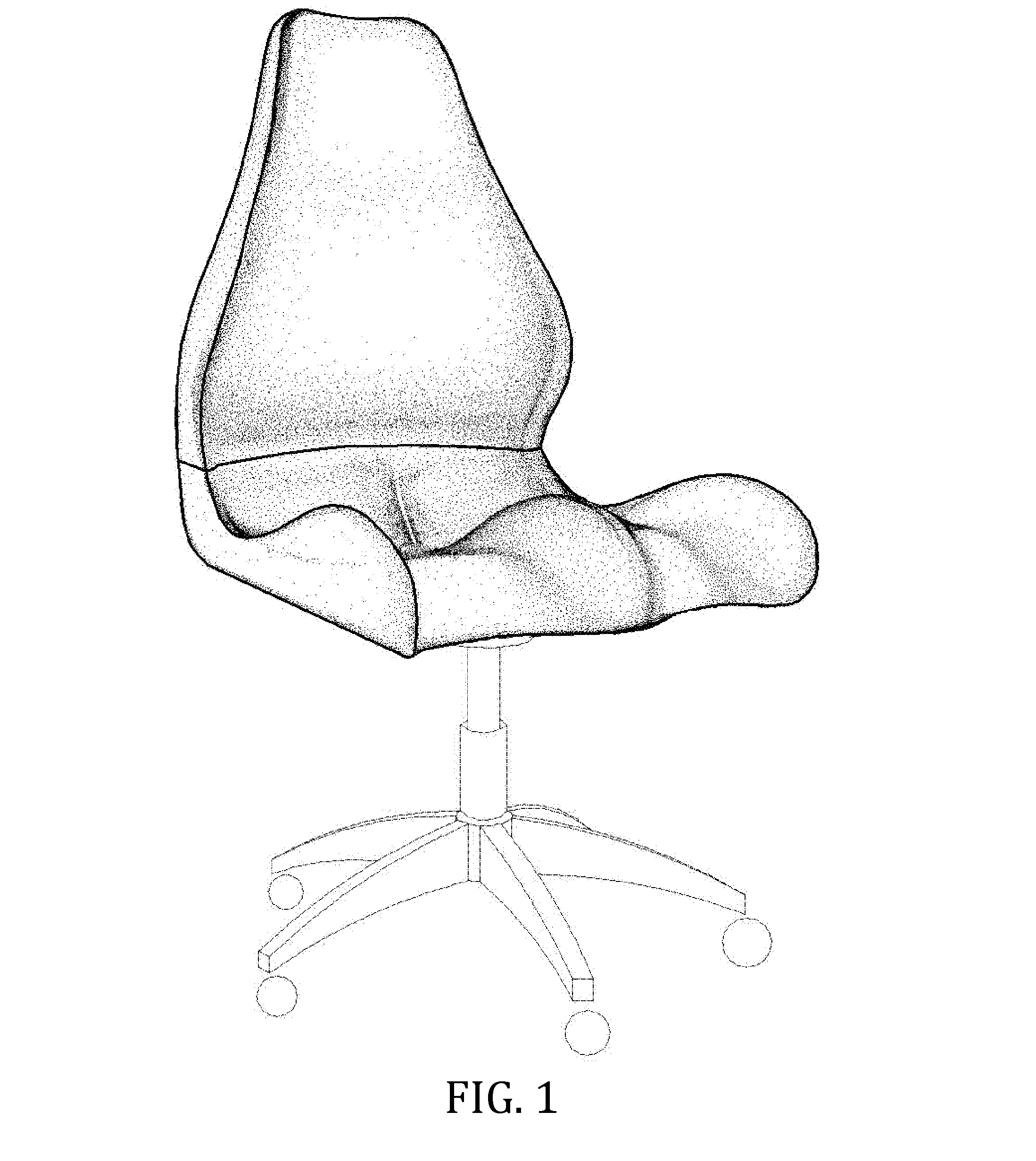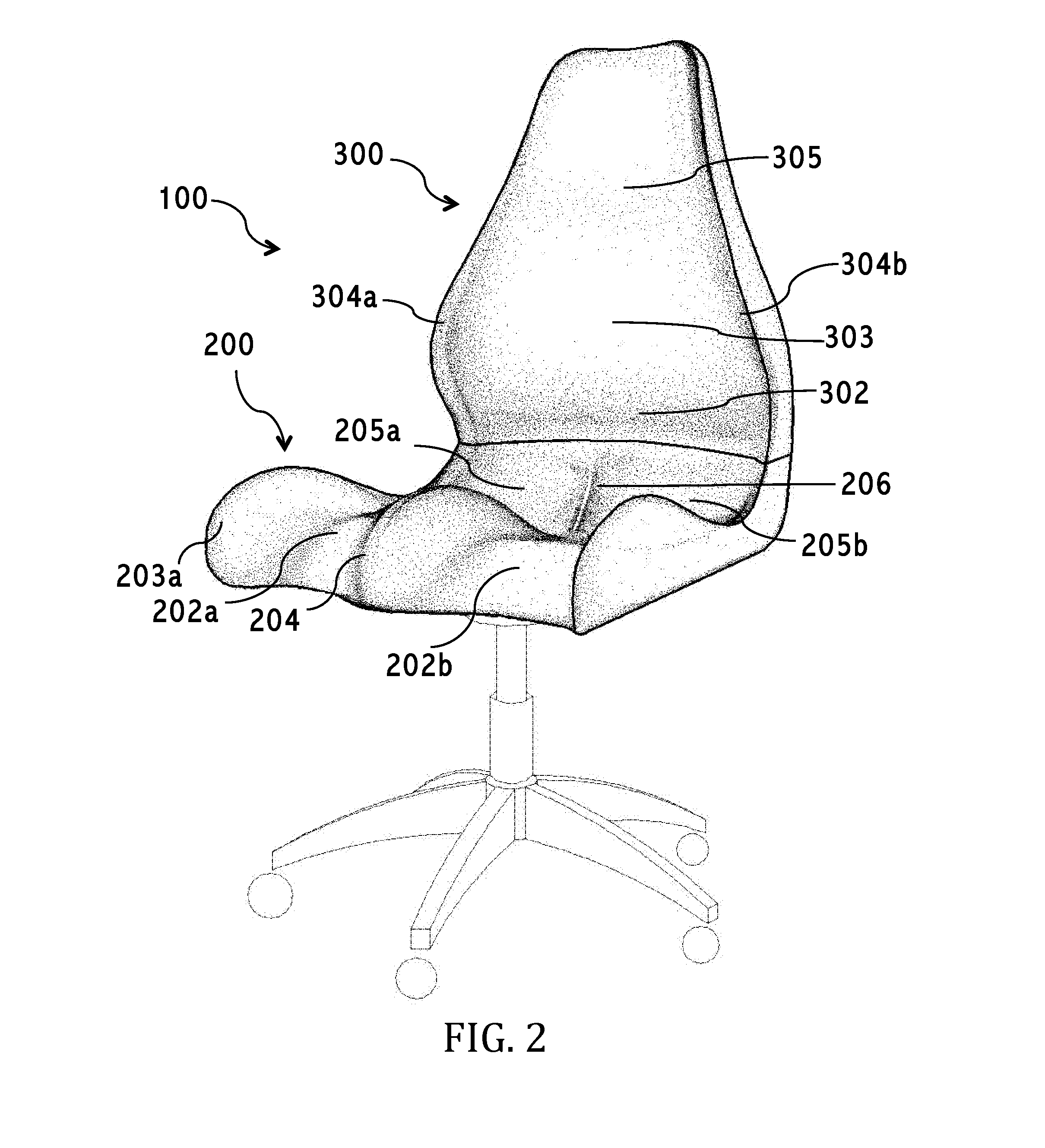Orthopedic chair for treatment and prevention of spinal diseases
a technology for spinal diseases and orthopaedic chairs, applied in the field of orthopaedic chairs, to achieve the effect of treating and preventing spinal diseases
- Summary
- Abstract
- Description
- Claims
- Application Information
AI Technical Summary
Benefits of technology
Problems solved by technology
Method used
Image
Examples
Embodiment Construction
[0032]The present invention provides an orthopedic chair that is capable of treating and preventing spinal diseases. Referring to FIG. 1, the said chair 100 comprises a seat 200 and a seat back 300. The said seat 200 is mounted on a support that can include well-known height adjustment means; the support will not be described herein as it is not included in the invention.
[0033]The said seat 200 has a shape that matches the natural contours of an occupant's buttocks, thighs, and upper legs. In which, the said seat has its concave backward portion, consisting of concave zone 205a and concave zone 205b, connect to the concave lowest portion 302 of the said seat back 300, creating a dedicated concave zone 400 as circled in FIG. 3. The dedicated concave zone 400 contours the occupant's buttocks closely but comfortably. In the center of the seat's concave backward portion, i.e. between concave zone 205a and concave zone 205b, is a small hump 206 that fits tightly into the occupant's sacru...
PUM
 Login to View More
Login to View More Abstract
Description
Claims
Application Information
 Login to View More
Login to View More - R&D
- Intellectual Property
- Life Sciences
- Materials
- Tech Scout
- Unparalleled Data Quality
- Higher Quality Content
- 60% Fewer Hallucinations
Browse by: Latest US Patents, China's latest patents, Technical Efficacy Thesaurus, Application Domain, Technology Topic, Popular Technical Reports.
© 2025 PatSnap. All rights reserved.Legal|Privacy policy|Modern Slavery Act Transparency Statement|Sitemap|About US| Contact US: help@patsnap.com



